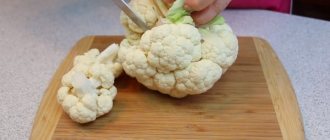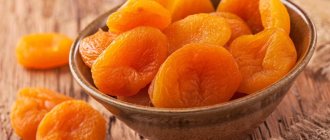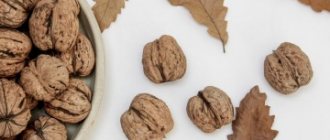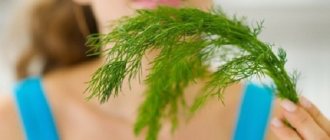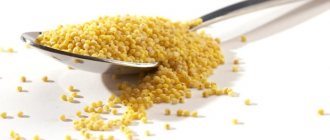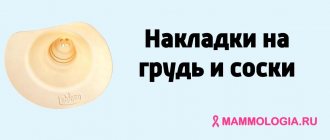During pregnancy and breastfeeding, any woman strives to make her diet as varied and healthy as possible. One of the products that are considered a real storehouse of nutrients are pine nuts.
But should you eat pine nuts while breastfeeding? Are they capable of causing allergies in the baby, and do they have other undesirable properties?
Composition and benefits
Cedar kernels have great nutritional value. They are easily absorbed by the body and have an anti-inflammatory effect. Nuts contain unsaturated fatty acids, vitamins, potassium, iodine, iron, phosphorus and magnesium.
Pine nut kernels help improve the general condition of the body and the well-being of a nursing woman. In addition, nuts contribute to:
- getting rid of skin lesions (acne, psoriasis, eczema);
- strengthening hair and nails;
- cleansing the liver of toxins;
- prevention of cardiovascular diseases;
- prevention of varicose veins;
- improving memory;
- strengthening the immune system.
Pine nuts help improve performance and give a young mother a boost of energy and vigor for the whole day.
This product, like meat, contains a large amount of protein. If a woman is a vegetarian, then pine nut kernels will help compensate for the lack of this substance in the body.
Forest Treasure
Pine nuts are perhaps the most expensive on the market. This is due to the fact that they are very difficult to obtain. There are machines for knocking down cones from cedar pines, but they can only work in cultivated areas. And in the taiga, where the most popular type of this tree in Russia grows (Siberian cedar pine), you have to work manually.
The artisan, risking his life, climbs a tree and knocks down the cones with a special hammer, and then his assistants collect the “harvest.” From four buckets of cones, you end up with one bucket of the finished product.
But all the efforts are undoubtedly worth it, because pine nuts contain:
- A plant protein that is 99% digestible by humans and contains the essential amino acids lysine, methionine and tryptophan. Therefore, pine nuts will perfectly fill the protein deficiency in the diet of vegetarians.
- Vitamins of group B, as well as K and E in the form of alpha-tocopherol.
- Polyunsaturated fatty acids.
- Iron, zinc, magnesium, phosphorus, copper, manganese and other elements.
What about allergies?
Undoubtedly, all types of nuts are allergenic foods. But it is worth noting that cedar kernels are a less allergenic product than, for example, walnut or pistachio kernels. However, a nursing mother should be careful when introducing pine nuts into her diet.
Most often, this product causes gastrointestinal disorders in the child, such as colic, bloating, constipation. But, in rare cases, symptoms of an allergic reaction may appear - a rash on the baby’s skin, redness. If these symptoms occur, the young mother will have to give up pine nut kernels for a while.
How to choose pine nuts
Nuts are sold in shells or shelled, as well as in cones. When choosing between them, it is better to give preference to shelled kernels. Nuts in cones can be eaten no more than a month after collection, since in an enclosed space the likelihood of rotting and the appearance of mold increases many times over.
When choosing shelled kernels, you need to:
- Evaluate appearance. There should be no traces of mold, cracks, or greenish spots on the shell;
- Estimate the density of nuclei. It is better to purchase nuts that are dense and slightly moist to the touch;
- Buy nuts that have no trash in their packaging. The presence of branches, stones, dirt indicates artisanal production, which does not have the best effect on the quality of the product;
- Pay attention to the smell. Fresh nuts give off a pine aroma. A rancid, unpleasant odor indicates that the nuts were collected a long time ago or that the rules for storing them were not followed;
- Pay attention to the release date. Pine cones are collected in September-October.
If you decide to purchase already peeled kernels, then you need to buy only a fresh product, released no more than 2-3 months ago. Peeled nuts should be light in color, without brown, gray or green spots.
If you notice a change in color on at least one nucleolus, then it is advisable to refuse the purchase. With a greater degree of probability, such nuts will already turn out to be bitter and even hazardous to health.
Rules of use
If a woman is wondering whether a nursing mother can eat pine nuts, then the answer, in most cases, will be positive. If you exclude the presence of diseases that are a contraindication to the use of this product, then great benefits can be derived from its use.
By consuming 100 g of Siberian pine seeds (the so-called pine nuts), you can satisfy the body's daily need for manganese, copper, cobalt, and zinc. And 30 grams of kernels contain the daily protein requirement.
Nursing mothers should eat pine nuts in moderation. You should start with 3-5 kernels per day, gradually increasing the norm, in the absence of negative manifestations in the child. The maximum serving of pine nuts during breastfeeding is 30 grams. You can eat them 2 times a week.
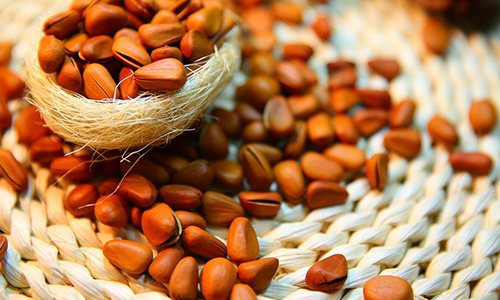
If a mother decides to sweeten the nuts with honey, then she needs to take into account the fact that honey is an allergenic product that can cause rashes and irritation on the baby’s skin.
Folk recipes
Traditional folk medicine has some recipes for improving the quality of milk using pine nuts. Most of these recipes came to us from residents of the Far North, who know about the beneficial properties of these fruits from their rich experience of use.
- Mixture for fat content and nutritional content of milk. To prepare this infusion, you need to boil 300 ml of milk, add 2 tbsp. l. crushed grains, leave to infuse in a thermos for three hours. You need to drink 2-3 sips (no more!) 5-6 times a day. The indicated 300 ml is the maximum permissible daily dose.
- Recipe for improving milk quality. To prepare, mix 1 tbsp. l. pine nuts crushed into fine crumbs and 1 tsp. honey. Take a teaspoon 2-3 times a day.
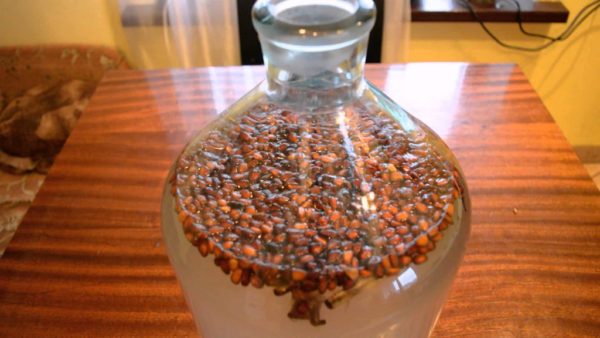
Pine nut infusion improves the quality of breast milk.
Storage rules
When buying pine nuts, choose an unshelled product. The shell protects the kernels from the adverse effects of the environment. Peeled cedar grains quickly deteriorate and lose their beneficial properties.
Unshelled pine nuts are stored in the refrigerator or freezer. In the first case, the shelf life of the nucleoli will be 3 months, in the second – 6 months. Unshelled nuts can be stored for up to a year at room temperature. You cannot use nuts that have expired. They can cause digestive upset and intoxication of the body.
Introduction rules
Pine nuts are a natural product that is useful for mother and baby during the guardianship period. It is important to organize its administration correctly and not cause allergies in the baby. It is especially important to introduce them into the diet, as they help to more easily survive lactation crises and restore lactation at 3 months.
Cedar pine kernels can be administered in minute quantities starting from the first days of the baby’s life, namely 1 kernel per day. After 3 months, you can act more boldly and start taking it with 1 level teaspoon, gradually increasing the amount of nuts you eat per day to 50g. It should be remembered that even if your baby does not experience any negative reactions, you should not consume the treasured nuts uncontrollably. The maximum permissible norm per day is 50g.
When introducing nuts, do not consume any new foods for at least 2 days so that you can say with confidence that your baby is allergic to this particular product. As a rule, skin rashes, if there is an allergy, become noticeable 5-6 hours after consumption.
Pine nuts, which can be consumed while breastfeeding, are only fresh or dried kernels, since fried ones are prohibited during breastfeeding, like anything fried, in addition, they lose their beneficial properties.
Shelled nuts can be dangerous
When buying nuts, keep in mind that in the shell they last 2 times longer than peeled ones. When stored at the market or in a store, shelled nuts come into contact with the environment and oxidize, which leads to bitterness in the mouth and poor health after consumption. Therefore, it is strongly recommended to consume only self-shelled pine nuts purchased in shell.
Allergenicity
Nuts are the strongest allergen and are among the top 10 products contraindicated for consumption during lactation. At the same time, as mentioned earlier, they are more likely the seeds or kernels of cedar pine. However, it is worth knowing that the kernels are very close in composition to nuts, so an allergy to them is not excluded.
To avoid allergic reactions on the part of your baby, carefully follow the rules for introducing nuts into the diet. Use them regularly and in moderation.
Here are the reactions that may occur when consuming old, overcooked pine nuts, as well as large quantities of them:
- heartburn in the mother and bloating in the baby;
- a skin rash may appear;
- redness of the skin in the abdomen, arms, legs, back, face;
- your face or mouth may become swollen;
- if the mother had eczema or psoriasis, they may worsen;
- vomiting, nausea, severe colic as a result of food poisoning.
It is necessary to monitor an allergic reaction within 2 days from the moment of introducing a new product into the diet, however, as practice shows, the first signs of an allergy become noticeable within 5-6 hours after the first intake of a new product.
Is it possible to overdose when eating nuts?
No matter how strange it may sound, but when consuming pine nuts, you can encounter an overdose of this product. Nuts are a compulsive delicacy. When we are about to eat a few kernels, we ourselves may not notice how we eat a handful or two. Many people believe that nothing bad can happen from eating a large number of nut kernels. But that's not true.
Symptoms of an overdose do not appear immediately, but after some time - from a day to two to three days. The main symptom will be bitterness in the mouth. Its intensity depends on the degree of overdose - from mild to unbearable. Dry mouth, nausea, drowsiness, and dizziness may also be present. Such symptoms develop against the background of the choleretic effect of cedar kernels.
To neutralize the negative effects of pine nuts on the body, it is recommended to take the sorbent and avoid coffee, spicy and fatty foods for several days. Along with the sorbent, you can drink green leaf tea. It has the property of removing harmful substances and toxins from the body.
Properties of hazelnuts
100 g of hazelnuts contain a record amount of calories - 704 kcal. However, due to the small amount of carbohydrates, hazelnuts are considered a dietary product. Hazel is rich in folic acid (vitamin B9). It is the main component for the synthesis of substances that act as building materials for a growing organism. By regularly eating hazelnuts while breastfeeding, a mother will help her child, who is gaining weight slowly, catch up with his peers and strengthen his immune system.

In addition to vitamin B9, hazelnuts contain a large amount of vitamin E, as well as B, K and A. Vitamin K increases blood clotting and prevents the development of hemorrhagic disease in newborns. It is required for children whose umbilical wound does not heal for a long time. Hazel contains potassium, calcium, magnesium, sulfur, phosphorus, iron, iodine, copper, selenium, fluorine and zinc.
Effect on lactation
The common belief that pine nut kernels can stimulate breast milk production is incorrect. Experts have no evidence on this matter.
But this product affects the quality characteristics of mother's milk. It saturates it, makes it thicker and more nutritious. This property is especially useful for those mothers whose babies suffer from underweight. In this case, pine nut kernels help the child gain the missing kilograms and nourish the body’s cells with useful substances.
Benefits during lactation
Pine nuts can have a tremendous impact on the female body. They contain everything necessary to maintain the health of a nursing mother, her beauty and energy. They are advised to be used to restore the correct balance of vitamins and microelements that a woman has lost during pregnancy.
Thanks to the high content of arginine, an amino acid that promotes the formation of nitric oxide, the body's metabolic processes are normalized. This promotes effective renewal at the cellular level, which cannot but have a beneficial effect on the development of organs and systems of the baby.
The conclusions of research by the Russian Academy of Medical Sciences show that when breastfeeding a child, a woman especially needs vitamins A, C, B1, E.
So, there is more vitamin C in pine nut kernels than in black currants! This component is important for children at any age. It improves immunity, is a natural laxative, and for infants it is a prophylactic agent that helps avoid sudden infant death in infancy.

Cedar pine seeds provide the mother's body with useful substances and vitamins.
Vitamin A is responsible for the development and growth of a small organism.
Vitamin B1 supports cardiovascular activity and has a beneficial effect on the functioning of the nervous and endocrine systems. It is important for proper cellular metabolism and regulation of tissue respiration.
Vitamin E is found in large quantities in nut kernels. This element is considered one of the most important assistants to female beauty. It tones the skin after childbirth and promotes the healing of microcracks on the nipple halo of a nursing mother.
A large amount of quickly absorbed iron will help mothers cope with postpartum anemia. In addition, nut kernels have a slight diuretic effect, which will be important for those women whose swelling has not yet gone away.
Eating several kernels a day provides women and children with strong immunity and energy.
The claim that nuts increase lactation has not been proven. But it is a fact that the quality of breast milk is improving. It becomes fatty and nutritious, enriched with all essential nutrients.
It should be taken into account that the abuse of pine nuts can have negative consequences not only in the form of allergies in a child. For the mother, this is fraught with lactostasis due to the high fat content of the milk.
Cedar oil for mom
Pine nut oil is often used in cosmetology. It has the property of regeneration at the cellular level, skin rejuvenation and wound healing.
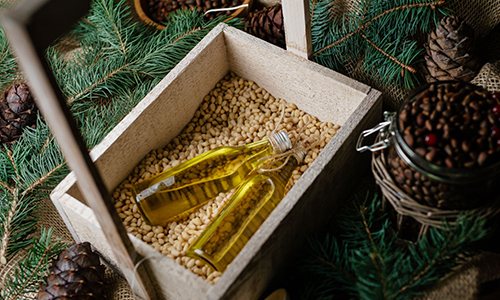
For cracked nipples during breastfeeding, lubricate the affected areas with cedar oil after feeding the baby. If stretch marks bother you after childbirth, then oil can also help. Apply it to problem areas and rub into the skin with massaging movements.
Cedar milk during lactation
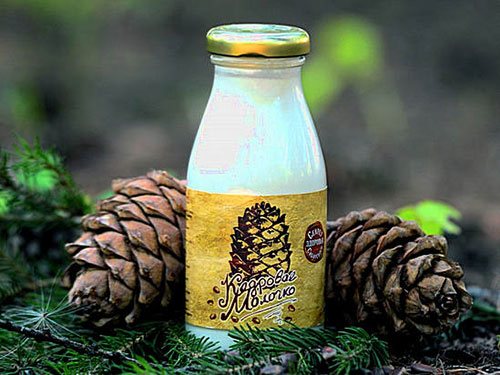
Pine milk is made from pine nut grains. It is a product that is necessary for women during pregnancy and breastfeeding, as well as for infants. This is due to the presence in its composition of a large number of vitamins, microelements, and amino acids.
The presence of vitamin B, tryptophan and arginine in milk promotes the correct and complete development of the visual organs and the production of hormones responsible for growth. Vitamin B ensures the normal functioning of the central nervous system.
Cedar milk is rich in phosphorus, which ensures the normal functioning of muscles and the central nervous system. The combination of phosphorus, silicon and calcium promotes better formation of teeth and bone tissue.
Magnesium contained in cedar milk is an excellent preventative measure for preventing anemia, as well as for its treatment.
Thanks to zinc and iodine, the baby’s brain activity significantly improves, which develops his mental abilities. In addition, it is iodine that ensures the normal functioning of the thyroid gland.
conclusions
Pine nuts during breastfeeding saturate the body of mother and child with useful substances and vitamins. The main thing is to follow the rules for their use:
- introduce into the diet no earlier than three months after birth;
- first use – several nucleoli;
- maximum portion per day – 30 grams;
- eat infrequently, once or twice a week;
- do not eat damaged or old nuts;
- take into account contraindications.
Follow these recommendations, and your baby will receive invaluable benefits from mother's use of this product. Pine nuts will help nursing mothers restore strength, strengthen the immune system and improve the taste and quality of breast milk.
Dear blog visitors, leave your reviews and opinions on how beneficial pine nuts are during lactation. Share the link to the article with your friends on social networks, let them also speak about the benefits and harms of cedar kernels during breastfeeding.
The nutritional value
To answer the question about the possibility of consuming these nuts during lactation, you need to have an idea of their nutritional value, chemical composition, properties and possible effect on the baby’s body.
Pine nuts are the edible seeds of certain plant species belonging to the genus “pine.” In most cases, they are represented by the seeds of Siberian pine. They have nothing to do with cedars, the seeds of which are inedible.
The nut is very high in calories and contains large quantities of fats and carbohydrates. Despite this, the composition does not contain cholesterol, therefore it is considered a dietary product. Nutritional value of 100 g of product is 673 kcal. Of them:
- proteins - 13.7 g;
- fats - 67.4 g;
- carbohydrates - 13.1 g;
- ash - 2.6 g;
- water - 2.3 g;
- sodium - 2 mg;
- potassium - 597 mg.
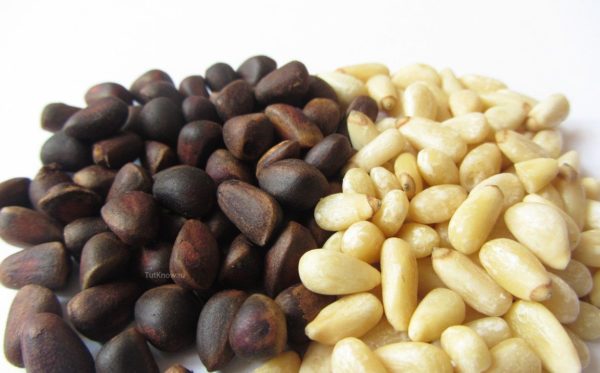
Pine nuts are the seeds of the pine pine tree, native to Siberia.
Chemistry content – is there any?
It is impossible not to note the chemical composition. It is so diverse and rich that it can easily stand on a par with meat products. Although the fats contained in nuts are much easier and faster absorbed by the body. That is why they are a priority.
The iron content replenishes and enriches the blood in the body, calcium strengthens the bone skeleton, teeth, hair and nails. In addition, phosphorus, potassium, manganese, sodium and this is not the entire list of elements that fill nuts.
Positive aspects of cedar kernels
The excellent properties of pine seeds have been known since time immemorial. Their composition seems to be specially selected so that the human body receives maximum benefit. If you eat nuts in small quantities but regularly, your body will receive significant support. Small nuts are capable of:
- improve brain activity;
- have an anti-inflammatory effect;
- increase the body's resistance to disease by strengthening the immune system;
- activate metabolic processes;
- stimulate hormonal functions;
- improve digestive processes.
All of these properties together will provide invaluable help to the body of a small child and his mother.
Walnuts
This variety of nuts is also called Voloshsky. It is most common in our territory. It is eaten raw and dried, and even green. It is green nuts that contain the most vitamin C, and everyone knows about its benefits for the body - not a single vital process can occur without its direct or indirect participation. Ripe nuts do not contain as many vitamins as green nuts, but they are quite sufficient.
Vitamin B1 (thiamine) is involved in the metabolism of proteins, fats, and carbohydrates. It is necessary for the baby to grow and develop normally, for the normal functioning of his nervous system, heart and blood vessels, as well as digestion. It is called the vitamin of optimism and is involved in the synthesis of blood cells. Vitamins B2 (riboflavin) and B3 (PP, nicotinamide) also take part in hematopoiesis and many other processes that ensure vital functions. Rutin and carotenoids, vitamin E, many mineral components: magnesium, without which all the qualities of vitamin B1 are not fully revealed; iron in combination with B vitamins prevents the development of anemia; zinc, iodine, calcium, phosphorus - a whole vitamin and mineral complex, which, in combination with oils, proteins, fiber, fatty acids and a host of other useful substances, can prevent the occurrence of any deficiency.
Can a nursing mother eat walnuts? The answer is obvious, but no more than five to seven pieces per day. Daily use is also not necessary. Overeating can lead to indigestion, allergies and even headaches. They should not be eaten by people with diseases of the digestive system, blood hypercoagulation, skin diseases - neurodermatitis, eczema, psoriasis. Walnuts are very high in calories, but contain virtually no carbohydrates, so by eating them, a nursing woman does not risk spoiling her figure.
There is an opinion that eating nuts, especially walnuts, improves the quality and quantity of breast milk. In fact, the quantity does not increase, but the nutritional value increases, and the baby does not ask to eat again for a little longer.
It is also believed that the skin covering the nut kernel causes allergies. If you remove it, and it can be removed quite well from walnuts, then the white contents of the kernel are more inert, although there are fewer useful substances in it.
Nut kernels do not need to be fried before use; nut jam, nut butter and confectionery products with nuts cannot be substituted for nuts. There are practically no benefits in processed nuts, and such products can cause extra centimeters on the mother’s waist and colic in the baby.
But natural oil from Volosh nuts can be added to salads and porridges. It contains almost all the beneficial substances that nuts are rich in and is a good prevention of constipation in both mother and child.
Recipes with nuts to improve lactation
If the newborn is not allergic to any particular type of nut, it can be added to various dishes. Since nuts have a positive effect on the composition of milk and significantly enhance lactation, several special recipes have been developed that provide a positive effect.
To increase the nutritional value of human milk, a special infusion is prepared. Walnuts (1-2 kernels) are thoroughly crushed and added to 100 ml of boiled milk. The composition is poured into a thermos and left for 2-3 hours. Take warm during the day. Mom should remember that the “healing” drink contains 2 powerful allergens: nuts and milk, so before taking the mixture you should make sure there is no reaction.
The crisis period or lactic crisis makes every mother worry. At this moment, milk is almost completely absent, and the woman becomes despondent. Buying formula milk is not the best solution, especially since the opportunity to maintain lactation is always present. A time-tested recipe for defeating lactic crisis is as follows: juicy carrots are grated and mixed with chopped walnuts. The mixture is stirred and taken 1 teaspoon 3 times a day 30 minutes before meals. The composition should be placed in an airtight container and stored in the refrigerator for no more than 3 days.
Nuts are a storehouse of vitamins and microelements, and their proper consumption during lactation can only bring benefits. Compliance with all prescribed rules will allow you to acquire useful qualities without harming the health of the newborn.
Beverages
Violation of the drinking regime and a decrease in the amount of fluid consumed contributes to the deterioration of lactation. A nursing mother should drink at least 2-2.5 liters of liquid per day. Increasing the amount of breast milk is facilitated by drinking warm teas, herbal infusions, and juices. The most proven method is warm tea with milk or honey, drunk 20 minutes before feeding the baby.
Also, to improve lactation, mother can drink:
- dried fruits compote;
- dill tea. Preparation: pour a spoonful of dill (seeds) with boiling water (200 ml), leave everything in a thermos for several hours. The infusion is divided into 2 doses. A decoction of anise or caraway seeds has the same property;
- milkshake with dill – chop the dill seeds and mix with a glass of kefir, a pinch of salt and nutmeg. Strain and drink in the morning before meals;
- teas with the addition of lemon balm or simple mint increase the amount of breast milk and calm the nerves. You can brew only the leaves of the plant, you can mix it with black or green tea;
- freshly squeezed juices from carrots or currants. It is recommended to dilute them slightly with water;
- ginger tea. Grind 1 ginger root, add water (1 liter), boil. Add lemon or honey, drink 50 ml 3 times;
- Barley decoction or barley drinks are excellent lactogonics. Drinks can be purchased in the diet departments. The decoction is made at home;
- dandelion infusion. Add chopped dandelion root and leaves (about 1 teaspoon) to a glass of boiling water. Infuse, strain, drink ¼ cup before meals 3-4 times a day;
- juice from dandelion leaves. Grind the young leaves of this flower with a blender or meat grinder, squeeze out the resulting pulp, and add salt to the juice. Leave for half an hour, add a little honey, sugar or lemon juice, drink in small sips 2 times a day.
Even if a nursing mother knows which foods increase lactation, and she adheres to proper nutrition and drinking regimen, she must remember about her rest regimen. She shouldn’t overwork herself, overload herself physically, or expose herself to stress. Also, do not forget about night feedings - very often they are the key to successful breastfeeding.



